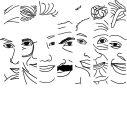Global hepatitis C situation (2022)
- An estimated 58 million people were living with chronic hepatitis C (HCV) in the world in 2019, with about 290,000 estimated to have died from HCV-related liver disease.
- The most affected regions were the Eastern Mediterranean and European Regions, with 12 million people chronically infected in each region. In South-East Asia region and the Western Pacific Region, an estimated 10 million people in reach region were chronically infected. Nine million people were chronically infected in the African Region and 5 million the Region of the Americas.
Hepatitis C in Australia (2021)
- At the end of 2020, an estimated 117,810 people were living with chronic HCV in Australia with 90,560 (77%) diagnosed.
- The major mode of HCV transmission is through sharing or re-using injecting equipment which has been contaminated by infected blood.
- By the end of 2020, 47% of people estimated to be living with chronic hepatitis C at the start of 2016 had received treatment (Viral Hepatitis Mapping Project National Report 2020).
- Of those people living with chronic hepatitis C at the start of 2020 (123 770), 8100 (9%) received hepatitis C direct‑acting antiviral treatment during 2020, and 7610 (94% of those treated) were cured during 2020.
Source: Kirby Institute 2021
Hepatitis C in culturally and linguistically diverse communities in Australia
- Unsterile medical procedures overseas are a common means of hepatitis C transmission among people from culturally and linguistically diverse backgrounds. (Fifth National Hepatitis C Strategy)
Hepatitis C in NSW (2020)
- An estimated 43,882 (37%) people living with chronic HCV infection live in NSW in 2020 (Kirby Institute 2021).
- An estimated 30,170 people received hepatitis C treatment between 2016 and 2020 with an treatment uptake of about 45.7% by end of 2020.
